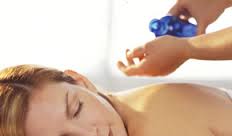Massage is the manipulation of the soft tissues of the body, particularly, the muscles, which can lead to benefits for all of the body systems. It can be used for relaxation, stimulation or rehabilitation.
Swedish massage got its name from Per Henrik Ling (1776-1839), he was a physiologist and fencing master from Sweden who developed a system of movements which he found helpful for improving his health and maintaining his physical condition. He received recognition for his work in this area, first in his home country of Sweden and then worldwide. The movements he developed included passive and active techniques on which modern massage is based today and still referred to as Swedish massage because of his influence.
Here, at Winterley Holistic Therapies, massage supports our holistic approach as it can be used to treat the whole person. The effects and benefits of massage are twofold: physiological (body) and psychological (mind).
On a physiological level, massage can:
- improve skin tone, colour and elasticity by removing dead cells (desquamation) and improving circulation
- encourage better circulation, therefore more efficient delivery of nutrients and oxygen to cells and more efficient waste removal
- encourage deeper and therefore more efficient and relaxed breathing
- support the lymphatic system to drain tissues and boost immunity
- relieve muscle fatigue, soreness and stiffness
- relieve tired, stiff joints
- sedate or stimulate the nervous system (depending on type of massage performed)
- speed up digestion and waste removal
- lower high blood pressure
On a psychological level, massage can:
- relax the body, thereby reducing tension and the effects of stress
- relax the mind, thereby reducing anxiety and its effects
- soothe and comfort the client
- give a ‘lift’ to the emotions and increase positive feelings
- increase energy by invigorating all body systems and reducing fatigue
